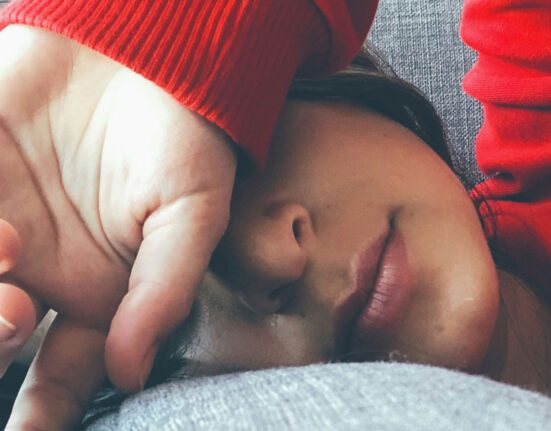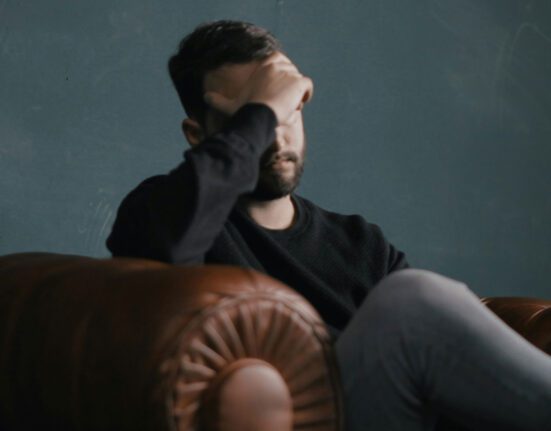Loss of Taste & Smell. What is it?

What is taste and smell?
The best way of explaining this is to first understand how we taste and smell. Our sense of smell is responsible for about 80% of what we taste. Without our sense of smell we would only detect 5 flavours – sweet, salt, sour, bitter and umami (savoury)¹. Taste and smell are separate senses with their own receptor organs that work together intimately. When we eat, tastants, (chemicals in our food) are detected by taste buds on our tongue²; at the same time airborne odour molecules are detected by specialized sensory neurons in our olfactory bulb which rests on top of the roof of our nasal cavity these two senses are stimulated at the same time and send messages to different parts of our brain which invoke memory, perception of flavour, gut juices, danger, nausea etc – dependent on what we are eating.
LOSS OF TASTE & SMELL IN LONG COVID
What it is: When we ‘catch COVID’ (i.e. a SARS-CoV-2 infection); a variety of situations occur namely it is thought that the virus binds to angiotensin-receptor-2(ACE2) receptors on taste bud cells, and cells in the nose, causing an inflammatory process and the cells to dysfunction, so leading to a loss of taste³ and smell. This is in the top five of most common symptoms of Long COVID.
Typical Symptoms: Smelling and tasting are known as ‘chemosensory’ functions, which can be divided into two main categories: quantitative and qualitative. Symptoms of loss are quantitative which describe either complete loss or reduced perception of taste and smell; and qualitative dysfunction reflecting a distortion of taste and smell experienced as the following: anosmia (complete loss of smell); ageusia (complete loss of taste); hyposmia(reduced ability to smell); hypogeusia(decreased sensitivity to taste); parosmia (distortion of smell), phantosmia (hallucinatory smells), dysgeusia (distortion of taste); dry mouth⁴.
CAUSES: Not an exhaustive list – COVID-19; Sinusitis, Influenza, common cold, Head Injury, Cranial Nerve Damage, Brain tumour, Stroke, Parkinson’s5…
KEY POINTS
- Tasting and smelling are chemosensory functions that are intertwined.
- Our sense of smell is responsible for 80% of what we taste.
- Without our sense of smell we would only taste 5 flavours – sweet, salt, sour, bitter and umami.
- The coronavirus attaches to the cells of our tongue and nose via ACE-2 receptors causing them to dysfunction leading to a loss of taste and smell.
- Symptoms of loss are quantitative -ie complete loss or reduced perception of taste and smell or qualitative – a distortion of taste and smell.
The persistence of loss of taste in long COVID underscores the sensory challenges faced by individuals on the road to recovery, highlighting the importance of tailored dietary support and ongoing research to address the diverse manifestations of post-acute sequelae.
Long Covid The Answers
Relief:
SEE YOUR DOCTOR! If you have more than 2 weeks of loss of taste and smell so that your Physician can rule out a serious cause.
Your best chance of improving your sense of taste and smell is during the first 6 weeks after losing it6.
You can retrain your sense of smell by using strongly-scented essential oils and eating highly flavorsome foods and drinks.
There are cookbooks available with recipes specifically targeted at individuals that have lost their sense of smell and taste.
Some medications such as intranasal fluticasone and oral triamclinolone paste have been shown to have some effect for Long Hauler’s in small trials but more research is needed. Medications should be administered under the supervision of your Family Physician, Ear Nose and throat specialist or a registered doctor familiar with treating Long Haulers.
- Flavorful Foods and Aromas: Incorporating flavorful foods and aromatic spices into meals can stimulate the senses and enhance the dining experience for individuals experiencing loss of taste and smell in long COVID. Experimenting with diverse cuisines and textures can help reawaken the palate and promote enjoyment of food despite sensory alterations.
- Aromatherapy: Engaging in aromatherapy practices such as inhaling essential oils or utilizing scented candles can provide sensory stimulation and evoke pleasant olfactory sensations, contributing to a sense of well-being and relaxation for individuals grappling with loss of smell in long COVID.
- Nutritional Supplements: Consideration of nutritional supplements such as zinc or vitamin B12, under the guidance of healthcare providers, may support olfactory function and promote the recovery of taste and smell sensations in individuals navigating long COVID.
- Rehabilitative Exercises: Participating in rehabilitative exercises specifically designed to target olfactory and gustatory function, such as smell training or taste stimulation techniques, can help promote sensory recovery and improve the perception of taste and smell in individuals with long COVID.
Credible Sources of Information:
1. Taste & Smell: Crash Course Anatomy & Physiology #16 – Excellent video which runs a little fast, you can slow it down and use subtitles in YouTube.
2. BrainFacts.org – Taste and Smell – good scientific explanation of how we taste and smell
3. Srinivasan M. Taste dysfunction and long COVID-19. Frontiers in Cellular and Infection Microbiology. 2021 Jul 14;11:716563. – Scientific overview of loss of taste in Long COVID.
Quick Summary of the Article:
- Long COVID-19 has led to persistent symptoms in recovered individuals due to various mechanisms like cellular damage, prolonged viral shedding, and chronic immune response.
- Taste dysfunction in long COVID-19 can result from local epithelial disorders or neuronal disorders, affecting taste perception.
- Role of Tongue Film Microbiota: Dysbiosis due to viral invasion can disrupt commensal homeostasis and induce inflammatory responses, affecting taste bud homeostasis.
- Role of Tongue Film Epithelial Cells: Inflammatory cytokines from taste bud cells can impact taste perception and renewal.
- This document discusses the impact of SARS-CoV-2 on taste dysfunction and the potential mechanisms involved.
4. Rogn Å, Jensen JL, Iversen PO, Singh PB. Post-COVID-19 patients suffer from chemosensory, trigeminal, and salivary dysfunctions. Scientific Reports. 2024 Feb 11;14(1):3455. – A Study that shows how loss of smell and taste occurs in Long Haulers.
Quick Summary of the Article:
- Post-COVID-19 patients may experience smell, taste, trigeminal, and salivary dysfunctions.
- Altered smell and taste can lead to reduced nutritional intake and quality of life.
- The study aims to investigate the prevalence and combination of these dysfunctions in post-COVID-19 patients.
- Specific taste ageusia, parosmia, dysgeusia, and dysesthesia are common symptoms reported.
- Self-reported symptoms include metallic, rotten, and harsh taste sensations.
- The study highlights the importance of assessing these dysfunctions in a common cohort of patients for better understanding and management.
5. “Symptoms Loss of Smell” by Mayo Clinic Staff – Overview of causes and symptoms
6. “How to regain your sense of taste and smell after COVID-19” by Bill St. John for University of Colorado Health – A Great Article some personal accounts and Dr Jennifer Decker, ENT specialist is interviewed explaining how to regain your sense of smell and taste if you have Long COVID.
7. Khani E, Khiali S, Beheshtirouy S, Entezari-Maleki T. Potential pharmacologic treatments for COVID-19 smell and taste loss: A comprehensive review. European Journal of Pharmacology. 2021 Dec 5;912:174582. – Good article giving probable mechanisms of loss of taste and smell in Long COVID and a list of possible therapeutic medications.
Quick Summary of the Article:
- Anosmia and ageusia are neurological complications of SARS-CoV-2 infection.
- Mechanisms include ACE2 expression, local inflammation, and infecting olfactory cells.
- Review of potential treatments based on clinical pharmacology principles.
- Various treatments like intranasal insulin, corticosteroids, and Omega 3 show beneficial effects.
- Lack of data on caffeine‘s role in COVID-19-related smell and taste loss.
- Theophylline and corticosteroids may improve olfactory and gustatory functions.
8. Long COVID Physio website – Great resource section of “Lost/Changed sense of smell and taste”, with links to charities and videos.
9. “I lost my sense of smell after COVID. Here’s what I’ve learned about life without it”. By Rudi Zygadio, Guardian Newspaper UK pub 24th Dec 2023 – Great article about a Long COVID sufferer’s personal account and his interview with Professor Carl Philpott, professor of Rhinology and Olfactology at the University of East Anglia, UK and Duncan Boak the founder of the Fifth Sense charity, set up to help people with smell and taste disorders.
10. Biography of Professor Carl Philpott – 4 links to videos about loss of taste and smell, generally and during COVID-19.








